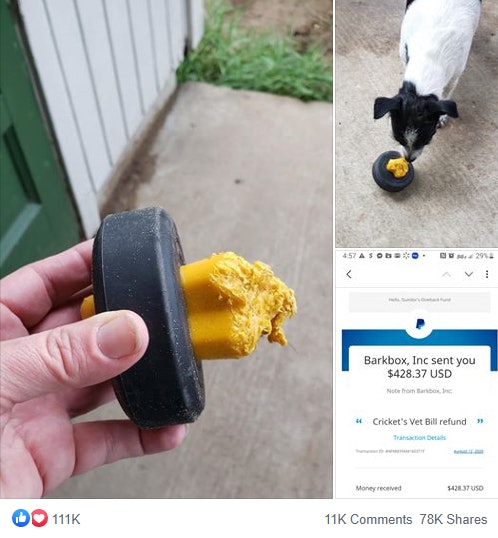Your company's customer service experience can make or break your relationship with your customers. Most businesses start to panic as soon as anything goes awry with a product, assuming that they'll begin to immediately lose customers with every outage or issue.
However, the fact that bad stuff happens isn't the problem: It's how you deal with it. That's where providing an excellent customer service experience comes in. You can turn a bad day into a good one by dealing with customer questions and issues effectively.
Here's how to create an excellent customer service experience that can win over any customer.
What is customer service experience?
Customer service experience is how customers feel when they get help from your company. Are they satisfied with the response they received? Did they get a timely answer? Was it frustrating to contact you? All of these aspects and more combine to become the customer service experience.
Providing an excellent customer service experience is essential for the success of your business. HubSpot found that "93% of customers are likely to make repeat purchases with companies who offer excellent customer service." Glance reports that 78% of customers have backed out of a purchase they had previously committed to due to a poor customer service experience.
Fortunately, customers are pretty transparent about what they want when they need help. Following the steps below, you can develop a customer service experience that wins over customers.
Inspiring customer service experience examples
Before we get into the details of how your company can build an excellent customer service experience, let's look at a couple examples of what happens when you get it right.
BarkBox goes head and tails above and beyond
When Melissa's dog Cricket managed to chew his way through a BarkBox toy meant for heavy chewers, she was upset. Cricket got sick from ingesting pieces of the toy, resulting in a hefty veterinarian bill — not to mention a sad pup!
But when Melissa contacted BarkBox, they completely turned the situation around. They immediately refunded her money, sent a new super-chewer toy, and apologized. But they took it even one step further.
Showing concern for the health of Cricket, they asked to see the veterinarian bill and reimbursed Melissa directly. Now she's a delighted customer.
"I have been very impressed with the way they have handled the whole situation. They have been very compassionate and fair and wanted to make sure they did everything possible to ensure Cricket was OK. Thank you BarkBox for stepping up and taking care of this."
The post on Facebook has been shared over 78,000 times and has over 100,000 likes! Not only is Melissa a happy customer, but other pet owners also know that BarkBox is a great company to purchase from.

Source Audio beats expectations
When Reddit user hekabip had a hardware and a software issue with their new guitar pedal, they contacted Source Audio through a form on the company's website. Then they sat back to wait, expecting a response in two or three business days.
Instead, Source Audio responded within 20 minutes, accurately troubleshooting the software issue and shipping out a replacement part for the hardware issue.
"The point is they just really did a great job addressing my issue fairly and timely," said user hekabip.
They posted their experience on Reddit, and other users added their own great Source Audio stories. This kind of advocacy is invaluable, especially on a subreddit targeted at guitar players.

How to create an excellent customer service experience
There's a common misconception that you can break down customer experience into three key components: discovery, engagement, and delivery. While that may be true at the most basic level, those things need more individualized attention if you hope to create memorable, meaningful experiences like the ones above.
1. Ask for customer feedback
When providing a great customer experience, only one opinion matters: the customer’s. Even if you think you're doing everything right, if the customer isn't satisfied with the service, they won't continue to do business with you. Gathering business feedback from your customers is the best way to help shape and improve your customer experience — not only does this make current customers feel heard, but it also enhances the product to attract future customers better.
The best way to determine if you're meeting your customers' expectations is to ask them!
Customer satisfaction (CSAT) surveys are a straightforward way of asking your customers for their opinions. After each customer service interaction, a survey is sent to the customer requesting feedback on the support they received. Most CSAT surveys also include a follow-up question asking for more detail.

Beyond CSAT — a great way to understand customer needs at the transactional service level — NPS (net promoter score) is a solid indicator of how engaged a customer is with your brand.
Responses to these surveys show you where you're missing the mark when trying to meet your customers' needs. If you're responding too slowly, your tone doesn't sit right with the customer, or you haven't fully resolved their issue, they will let you know.
2. Offer different methods of communication
If you ask ten different customers how they want to contact you, you might get ten different answers. From email to phone to messaging platforms, customers correspond with businesses in an unprecedented number of ways.
Customers believe having options is an integral part of a good customer service experience.
NICE inContact found that "90% of consumers are more likely to consider doing business with a company that offers multiple ways to communicate." Furthermore, when CMO Council asked customers which channels they expected businesses to offer, a large number of customers expected to see at least the following five channels:
Email (86% of respondents)
Telephone (65%)
Website (53%)
Text (52%)
In-person (48%)
One glaring omission from this list is social media: a channel that is growing in importance as crucial customer demographics shift. Social media support differs from website or app support in that it is very immediate and public — mistakes your team makes are immediately evident and hard to recover from.
Though the channel can be tricky, ensuring that your team knows when it’s time to bring a support conversation to a more private venue, such as direct messaging, can help provide a better customer service experience on social.
You may also want to consider implementing a multichannel support strategy. Multichannel allows your customer to switch quickly from one channel to the other with minimal effort — from social media support to email or phone support, for instance. This can be made easier by using support software that integrates with the social media platforms your customers prefer.
When you're able to offer more options, your customers have a better experience.
3. Make it easy to get help
Sometimes the best customer service experience is the one that you don't even notice. We call these "boring customer service stories." They don't sound like much, and often we don't even remember that they happened.
But customers don't want to have to jump through hoops to get help. In fact, 96% of customers who've had a high-effort experience report being disloyal in the future (compared to just 4% of customers who found it easy to get help).
It's easy to put up barriers between you and your customers through complex contact forms, policies, and escalations. Removing any obstacles can help provide a better experience.
Here are a few ideas on how to get started:
Create a helpful knowledge base that customers can search to help themselves.
Make it easy for customers to contact you through in-app support like live chat, and include your contact information in easy-to-find locations.
Find ways to eliminate restrictive policies that make customers work harder to change their accounts.
Self-service is a great way to empower your customers to get their answers without even needing to talk to a human, but it can be alienating for some. Make it easy for your users to find any self-service functionality you have and get additional assistance if self-service doesn't work for them. Nothing creates a worse experience than trying to provide something smooth and easy and having it be more challenging work — like needing to reach out to support after spending time searching through a help center article.
4. Respond quickly
No matter what study you look at, a quick response tops the list of what customers require for a good service experience. SAP Hybris found that 52% of customers chose quick replies as the most critical attribute of good customer service. In a Forrester study, 77% of customers responded that valuing their time is the most important thing a company needs to do.
There are several ways that you can help to decrease response time:
Hire additional staff
Work with a BPO (business process outsourcer)
Implement chatbots
Create self-service options
Utilize an AI to suggest documentation
These options, especially bots, can be incredibly impactful, but they can ruin a customer’s experience if something goes awry. Always implement functionality with your customer experience in mind. Don’t build something out just to make it easier for your team members to respond quickly — they also need to respond correctly and considerately.
Your customers don't want to wait around for help. Focus on reducing first reply time and making sure your customers feel like a priority. It's one of the most important things you can do to provide excellent customer service.
5. Build a culture of caring
Ultimately, providing a great customer experience comes down to the people. If the employees in your company aren't engaged and motivated to care about customers, any other initiatives will fall flat.
In PwC's Future of Customer Experience survey, 80% of Americans identified friendly service as one of the most essential elements of a positive customer service experience.
But even beyond being friendly, building a customer-centric culture has a ripple effect across all decisions. To create a culture of caring:
Build customer-centric culture questions into your hiring process. How have candidates improved the lives of their customers in the past? How do they respond to an angry customer in sample interactions?
Consider launching whole company support to shrink the distance between customers and internal employees. When everyone has a chance to hear how their actions impact customers, they become more customer focused in their day-to-day work.
6. Create multiple touchpoints
The point when your customers reach out to your customer service team isn't the only time they will consider when thinking about the experience you've provided. Attention to detail should be woven throughout multiple touchpoints within the customer journey.
Here are some touchpoints you might consider:
When a user first visits your site.
When they first create an account.
When they add a new user.
When they pay for a subscription.
Purchase anniversaries
The customer journey is super important to the customer experience. Ensure that you are hyper-focused on customer experience as you craft each step of their journey. If you provide an excellent customer service experience but they have a terrible time trying to purchase, all your hard work will be for nothing!
Develop a customer service experience worth shouting about
Your customer service experience can save the day when customers run into trouble. By providing quick, helpful service that gets your customers back on their feet, you can create brand advocates for life.







